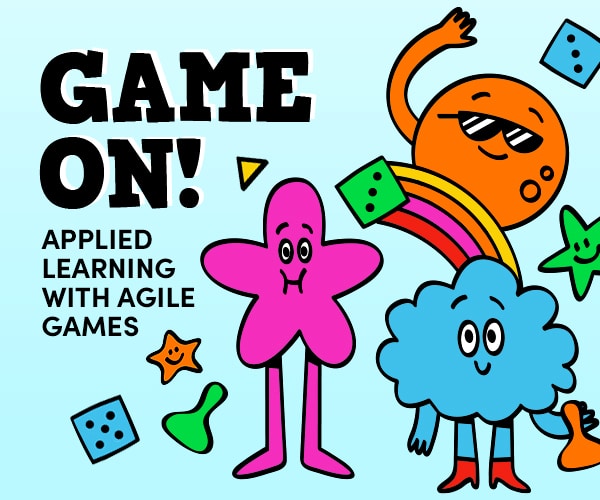Objectives
Learn about the attributes and duties of a role. Verify what your students already know about the subject (complemented by a short lecture). Let your students learn from each other.
I’ve successfully used it with all three Scrum roles: the Development Team, the Product Owner, and the ScrumMaster, but you can do it with roles from any framework or methodology.
Timing
Highly depends on the number of participants and on the format adopted.
Materials
Post-its, pens, and a whiteboard.
Number of Participants
As many as you like. Not less than two, for sure, and I’d recommend doing it with at least four.
Instructions
There are several ways to do this. Here I’ll describe one, and you can see more in the “Variations” section.
Split the whiteboard in a square with four quadrants, with enough room to stick a lot of post-its on each.
DO/DON’T
- Do a short lecture on the expected duties of the role in question (10-minutes top);
- On the top left quadrant, write “DO” and on the top right quadrant, write “DON’T”;
- Ask the participants to write on post-its what a person should and shouldn’t do while performing this role (one per post-it), and stick at the appropriate quadrant. I usually ask each three post-its for the quadrant “DO” and three post-its for the quadrant “DON’T”. And I usually give two or three minutes for that. But, you know, try it, inspect and adapt;
- Ask for one volunteer to go to the board, grab one Post-it from the quadrant “DO”, turn to the class, and say: “The <role name> should” and the Post-it contents. Important: it does not have to be a post-it he/she wrote on;
- Ask for a new volunteer to grab one Post-it from the quadrant “DON’T” and say: “The <role name> shouldn’t” and the Post-it contents. Again, it does not have to be a post-it he/she wrote on.
- Ask for as many volunteers as you feel necessary to repeat that. If you prefer, each volunteer may read more than one Post-it, and from both quadrants. It is interesting to change volunteers, so you promote movement and participation.
IS/ISN’T
- Do a short lecture on the expected attributes of the role in question (10 minutes top);
- On the bottom left quadrant, write “IS” and on the bottom right quadrant, write “ISN’T”;
- Ask the participants to write on post-its what a person should and shouldn’t be while performing this role (one per post-it), and stick at the appropriate quadrant. I usually ask each three post-its for the quadrant “IS” and three post-its for the quadrant “ISN’T”. And I usually give two or three minutes for that. But, you know, try it, inspect and adapt;
- Ask for one volunteer to go to the board, grab one post-it from the quadrant “IS”, turn to the class and say: “The <role name> should be” and the post-it contents. Important: it does not have to be a post-it he/she wrote on;
- Ask for a new volunteer to grab one Post-it from the quadrant “ISN’T” and say: “The <role name> shouldn’t be” and the Post-it contents. Again, it does not have to be a post-it he/she wrote on;
- Ask for as many volunteers as you feel necessary to repeat that. If you prefer, each volunteer may read more than one post-it, and from both quadrants. It is interesting to change volunteers, so you promote movement and participation.
Key Points
This is designed so that DOs and DONTs complement each other (by opposition). And then ISs and ISNTs, besides complementing each other (by the opposition), complement the DOs and DONTs by making participants think about what attributes are needed and what is undesirable to fulfill such duties.
If one or more of the points raised by the students is too wrong, you can make comments on it (perhaps, by asking questions) or ask if and why others agree or disagree.
Variations
- You may use it without the lecture, to make your students check what they already know about the subject;
- You may also do the lecture after the exercise, and ask the students to verify what they would change on the board;
- You may do the DO/DON’T and the IS/ISN’T at the same time if you are short in time (maybe by splitting the board into only two parts: DO/IS and DON’T/ISN’T). However, the students take more benefit from doing it separately.






